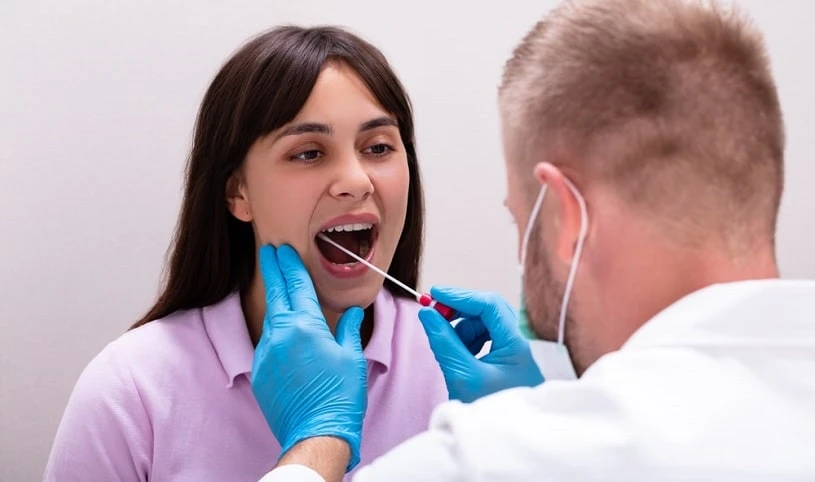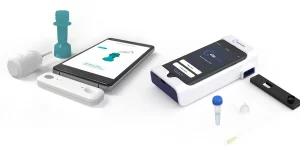Oral mouth swab tests have become increasingly popular for detecting various diseases, including infectious diseases, hormonal imbalances, and drug use. These tests are non-invasive, easy to perform, and can provide quick results. One of the key benefits of using oral mouth swab tests is their convenience.
As a result, researchers have been exploring existing and emerging technologies to enhance the accuracy and efficiency of oral swab tests. This article aims to provide an overview of the existing and emerging technologies for oral swab tests, including the Enzyme Immunoassay (EIA) technology, Liquid Chromatography-Mass Spectrometry (LC-MS), Lateral Flow Assays, and Biosensors. We will also compare the pros and cons of these technologies to help readers understand which technology might be most suitable for their specific needs.
By the end of this article, readers will have a thorough understanding of the various technologies available for oral swab tests and their potential applications, as well as the benefits of using oral mouth swab tests for disease detection.

Key Takeaways
- Enzyme Immunoassay (EIA) technology shows promise for accurate and sensitive oral swab tests.
- Cost-effectiveness and accuracy are important factors to consider when comparing technologies for oral swab tests.
- Emerging technologies such as lateral flow assays and microfluidic devices offer a more affordable and rapid option for drug testing.
- Biosensors hold promise for improving drug screening and monitoring, but challenges include ensuring sensitivity and developing accurate algorithms.
Enzyme Immunoassay (EIA) Technology for Oral Swab Tests
Enzyme Immunoassay (EIA) technology presents a promising approach for the development of accurate and sensitive oral swab tests for the detection of various analytes. EIA is an antibody-based detection method that utilizes enzymes for signal amplification, enabling the detection of low analyte concentrations.
Recent advancements in EIA technology have improved the sensitivity and specificity of oral swab tests, making them a viable alternative to traditional blood and urine tests. However, EIA technology still faces limitations and challenges, such as cross-reactivity with other substances and the need for trained professionals to perform the tests.
Despite these obstacles, EIA technology remains a valuable tool for the development of effective oral swab tests for a wide range of analytes.
Liquid Chromatography-Mass Spectrometry (LC-MS) for Oral Swab Tests
Liquid chromatography-mass spectrometry has been utilized as a reliable analytical tool to detect and quantify various drugs and their metabolites in oral fluid samples collected from individuals.
LC-MS applications in oral swab tests have been found to be highly sensitive and selective, providing accurate results even for low-level drug detection.
Sample preparation techniques for oral fluid samples can vary depending on the nature of the analytes being tested, with methods such as solid-phase extraction and protein precipitation being commonly used.
LC-MS has been successfully applied in various fields, including clinical toxicology, forensic analysis, and drug development.
With the rapid advancements in LC-MS technology, it is expected that this technique will continue to play a significant role in drug testing and monitoring in the future.
Lateral Flow Assays for Oral Swab Tests
One promising tool for drug detection in oral samples is the lateral flow assay, which offers a quick and straightforward approach to drug testing. This technology is based on the principle of immune-chromatography, whereby a lateral flow strip is impregnated with antibodies against the drug of interest, and the sample is added to the strip. If the drug is present in the sample, it binds to the antibody and produces a visible signal, such as a color change.
The advantage of this technology is its simplicity, speed, and low cost, making it an attractive option for point-of-care drug testing. However, the accuracy of lateral flow assays for oral swab tests is dependent on various factors such as the type of drug, the concentration of the drug, and the quality of the antibodies used. Therefore, further optimization and validation studies are needed to improve the accuracy and reliability of lateral flow assays for oral swab tests.
Biosensors for Oral Swab Tests
Biosensors have gained attention as a potential tool for detecting drugs in oral samples due to their ability to provide real-time, sensitive, and selective measurements. Nanotechnology applications have made it possible to miniaturize biosensors, making them wearable and portable.
These biosensors can detect a range of biomolecules, including drug analytes, in real-time and transmit the data to a smartphone or other device. Wearable biosensors have the potential to revolutionize drug screening and monitoring by providing continuous, non-invasive monitoring of drug use.
However, there are still challenges to overcome, including ensuring the biosensors are sensitive enough to detect low concentrations of drugs and developing accurate algorithms to interpret the data. Despite these challenges, biosensors hold promise for improving drug screening and monitoring, particularly in high-risk populations such as athletes and those with substance abuse disorders.
Comparing the Pros and Cons of Existing and Emerging Technologies for Oral Swab Tests
Analyzing the advantages and disadvantages of various methods for detecting substances in saliva samples has aided in identifying the most effective techniques for drug screening and monitoring.
When comparing existing and emerging technologies for oral swab tests, cost-effectiveness and accuracy are two important factors to consider.
Existing technologies such as enzyme-linked immunosorbent assay (ELISA) and gas chromatography-mass spectrometry (GC-MS) have been widely used for drug testing due to their high accuracy levels.
However, these methods are expensive and time-consuming, making them less cost-effective for large-scale drug screening.
On the other hand, emerging technologies such as lateral flow assays and microfluidic devices offer a more affordable and rapid option for drug testing.
However, the accuracy levels of these technologies are still being evaluated and may not be as reliable as the existing methods.
Therefore, choosing the most suitable technology for oral swab tests should consider both cost-effectiveness and accuracy, and further studies are needed to evaluate the effectiveness of emerging technologies.
Conclusion
In conclusion, the existing and emerging technologies for oral swab tests offer a range of benefits and drawbacks. Enzyme immunoassay technology is reliable and cost-effective, but may have limited detection capabilities. Liquid chromatography-mass spectrometry is highly sensitive and specific, but requires specialized equipment and expertise. Lateral flow assays are simple and easy to use, but may not be as accurate as other technologies. Biosensors offer real-time detection and portability, but are still in the development stage.
Overall, the choice of technology for oral swab tests will depend on various factors such as the purpose of testing, cost, sensitivity, specificity, and ease of use. To optimize the effectiveness of oral swab testing, it may be necessary to combine multiple technologies or develop new ones that address the limitations of current options.
By staying informed about the advancements in this field, healthcare professionals can continue to provide accurate and timely diagnostics to their patients.
Read our other blog post:
How To Use Technology To Increase Your Productivity?


